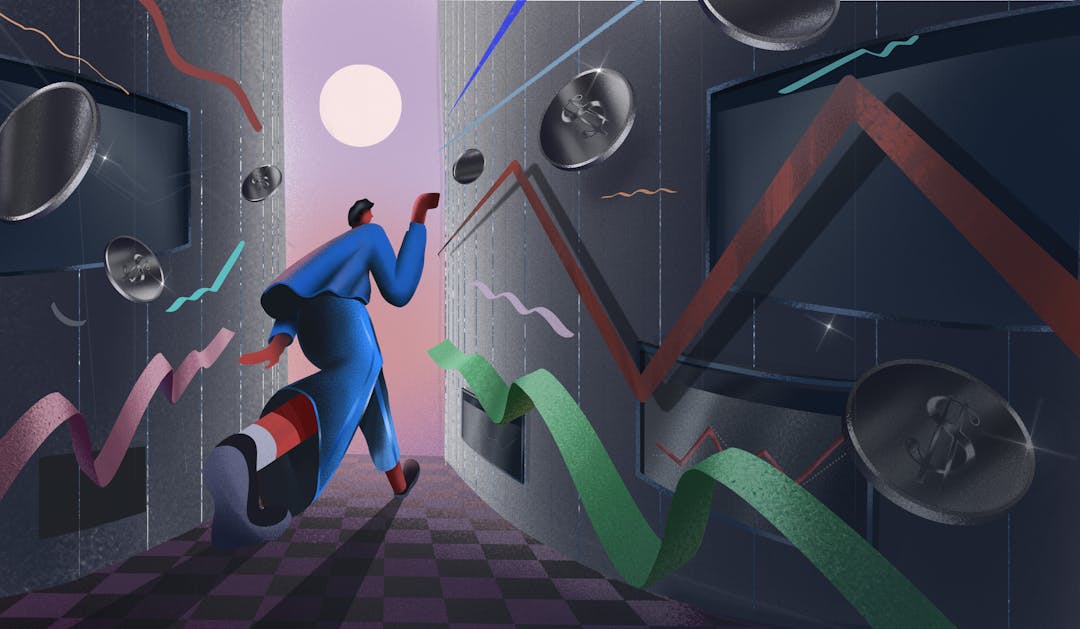Explore why customer loyalty is more important than acquisition, the metrics you need to be tracking, and how to build customer loyalty in just a few steps.
Customer loyalty is the essence of subscription businesses and a key lever of growth. Now more than ever, acquiring new customers is becoming harder and harder each day. Building a strong customer base, with users who are loyal to your brand, will help you in the long-term, and when things unexpectedly go south (like a global pandemic, or energy crisis).
In this article, we explain why customer loyalty is more important than acquisition, some metrics you need to be tracking, and how to build customer loyalty in just a few steps.
What is customer loyalty?
Customer loyalty is when your company and its products elicit positive emotions in your customers, prompting them to remain loyal to your brand. Building customer loyalty is a huge factor in terms of retention and renewal. Customer loyalty is developed on behalf of the company by maintaining customer happiness—which is nurtured through feedback and empathizing with your customers’ needs. Another aspect of loyalty comes from your actual product—does it solve a certain problem and continually prove to be an asset? Customer loyalty is a transaction where a customer pays you for a product expecting that you will provide a great experience in return.
Customer loyalty: more important than acquisition?
Customer acquisition is the process of gaining new customers. It’s a popular growth lever for SaaS businesses because it’s the most literal way to grow your customer base. However, customer acquisition becomes harder and more expensive as your customer base grows and the untapped market shrinks. With that being said, does customer loyalty have a larger impact on the business than acquisition? Let’s look at some points, starting with ROI.
Better ROI per customer
There is always an underlying challenge with customer acquisition cost (CAC)—spending the right amount to drive new customers to your service without jeopardizing the lifetime value (LTV) and revenue.
Focusing your spend on loyalty and retention will generate better returns. Retention and recurring revenue are the lifeblood of SaaS organizations, so why not invest more in your existing customers rather than on acquisition? Not to mention, in the past five years CAC has gone up 50% for B2B and B2C companies. Research from Bain & Company found that an increase in customer retention of only 5% can increase profits between 25%-95%. So, while you want to attract and convert new customers, retaining and upgrading existing customers has an even higher ROI.
Higher customer LTV
A growing LTV means a company is doing well. Customers are happy and will be giving you more money over the life of your relationship. LTV is the dollar amount you’re likely to receive from an individual customer over the life of their account with your product. If you have loyal customers who actively use your product, it’s rather likely they will renew when the time comes to spend money on different features and upgrades, leading to expansion revenue and a higher LTV.
More opportunities to upsell
Investing more efforts into customer loyalty will open many doors in terms of upselling. If you have high daily active users (DAU) and your product is providing continuous value, then upselling is a strategy you must take advantage of.
With upselling, though, you want to be extremely calculated about pricing and packaging. Make sure you clearly advertise what people are getting for the additional money they are paying. Of course, you can strengthen customer loyalty by tailoring product offerings to their needs.
Word-of-mouth marketing
What better feeling than having a product and brand so strong, that the marketing just does itself? We’re talking about word-of-mouth, or when customers love your product so much they recommend it to other people. Referrals happen when you focus on customer loyalty. When a customer is loyal to your brand, they will talk about it and ultimately bring in new customers for a very low CAC.
Key metrics of customer loyalty
It’s hard to measure how loyal a customer is because there isn’t really a scale dedicated to loyalty. However, there are key metrics and systems put in place that can help you capture feedback and also give you an indication on how happy and loyal a customer is.
1. Net promoter score
Your net promoter score, or NPS, is a customer satisfaction benchmark that measures how likely your customers are to recommend your business to a friend and/or another business. This is the best way you can attribute a number to customer loyalty. NPS measures the overall sentiment of a brand rather than the overall satisfaction with the purchase. NPS not only helps you evaluate customer loyalty, it can also help you evaluate the likelihood of customers churning. A high NPS is attributed to loyal customers, while a low score correlates with unhappy and potentially churning customers.
2. Customer satisfaction
It’s important to track your customer satisfaction over time. Surveying your customer base might take time and effort upfront, but you’ll gain a significant understanding of what your customers truly value and where there’s room for improvement. Asking your customers to take a survey every three months or so will give you a better idea on how you have taken their feedback and applied it, and how their overall sentiment is improving.
3. Churn rate
Your churn rate is the most obvious metric that is going to tell you if your customers are loyal or not. If you have a high churn rate, then you haven’t correctly fostered that customer loyalty and/ or other underlying issues. If you have a low churn rate, that indicates that the product is working for your customers, and they’re staying with your product.
4. MRR
Monthly recurring revenue, or MRR, is extremely important to track. MRR measures the total amount of predictable revenue that a company expects on a monthly basis. MRR is a leading growth metric because it encompasses new customers, add-ons, renewals, and upgrades.
You can break down your MRR to pinpoint exactly where your revenue originates. If your MRR is expanding over a certain period of time, it could be due to existing customers choosing to add-on or upgrade. On the flip side, you might break down your MRR and find it’s mostly from new customers signing on. In that event, you want to do some research as to why existing customers are not adding-on or upgrading as much. Perhaps a shifted focus on customer loyalty and happiness will do the trick.
How to build customer loyalty in 5 steps
Building customer loyalty is a lot like Rome… it can’t be built in a day. However, there are five steps we believe will ultimately help you achieve stronger customer loyalty over time. Let’s get into it.
1. Develop a customer loyalty program
With a saturated market and plenty of options to choose from, customer loyalty should be rewarded. Developing a customer loyalty program shows you appreciate your customers and will encourage them to refer and renew.
VIP programs
Developing a VIP program allows your company to reward some of your top users and subscribers. The VIP moniker always has a prestigious, yet allusive feel around it. Applying that label to certain customers will certainly encourage loyalty, and also add a high level of service from your support team.
Points-based programs
Implementing a points-based loyalty program typically consists of users receiving points for hitting predetermined benchmarks that reward them with a variety of incentives like bonus products, channel marketing opportunities, or even physical prizes. The gamification element gives the customer numerical value they want to hit by completing activities within the platform or by hitting certain benchmarks during their customer lifecycle.
2. Send personalized messages
Personalizing your outreach will go a long way. It shows your customer that you see them as more than a money-making machine. Personalization doesn’t begin when you first acquire a customer, it starts at the very beginning of the sales process and continues throughout the customer lifecycle. Everytime someone from your team reaches out to an existing customer, make sure they are adding touches of personalization. It can be as simple as referring to a topic once brought up in a previous conversation. Either way, tailor your messaging to prove you are listening to what your customer says.
3. Get direct feedback from customers
There’s no better way to figure out how to build loyalty than by talking to customers. Providing surveys is always a great way to solicit feedback; however when it comes to things like a feature request or changes to the platform, working closely with the product team to find the right outcome can go a long way. Those changes don’t need to be made instantly but if you’re keeping your customer in the loop with the process, that loyalty will grow.
4. Optimize customer service
Optimizing customer service doesn’t necessarily mean growing your CS team or implementing consistent training. We are referring to investing in a ticketing system, like Zendesk or implementing a chat bot like Intercom, to quickly respond to customer needs. You can also build an FAQ page on your website so your customers can easily navigate through questions that may not need a direct human response. The idea here is to work harder, not smarter. Thankfully there are plenty of great tools to help you do so.
5. Build a knowledge base
Not only does an FAQ page go a long way, but a full resource database built for customers who want to take the initiative to solve the problem for themselves, is always extremely helpful. There are going to be points where your usual working hours may not match up to some of your international customers, and providing a help center will allow those customers to get the answers they may be looking for.
Get an extensive toolset for boosting customer loyalty with ProfitWell Metrics & Retain
Customer loyalty and retention go hand in hand. Oftentimes it’s the loyal customers—the advocates—that not only renew their subscription but they also upgrade, purchase features, and refer new customers. To develop customer loyalty and retain customers you will have to invest in a toolset.
ProfitWell can set subscription companies up for success with our tools ProfitWell Retain and ProfitWell Metrics.
Retain helps you stop churn at the source, making delinquent churn a thing of the past. Credit card failures are your largest single bucket of churn, but you're barely recovering any of these customers, because you're ignoring the size of the payment failure problem. These failing customers could easily become your most loyal customers.
ProfitWell Metrics lets you see all of your B2B and B2C subscription reporting in one place, all in real-time. Identifying your VIPs and consistent users is a necessity when creating a loyalty program. Measuring a company’s DAU, as well as monitoring their activities will help you understand what your customers are really doing with the platform. Know who’s going to convert or churn before they do. We often say, “product isn’t features,” it’s a pattern of usage that gets your customers to value. Understand the relationship you have with every single customer, including shifts in usage across gender, location, and any other segment.




